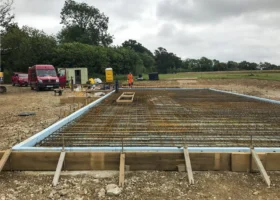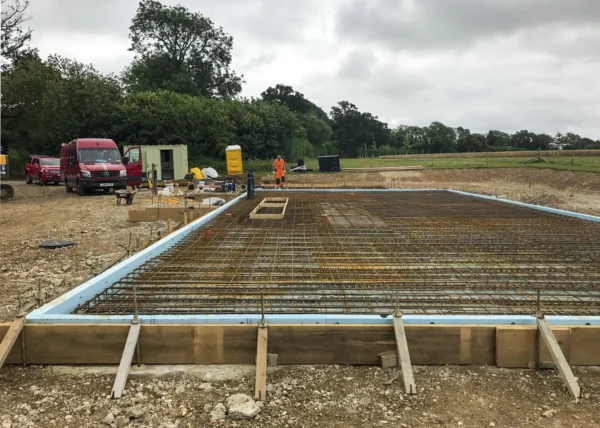How to Hire Contractors For a Self-Build Project
Whatever kind of home building project you’re taking on, you’ll need to pick tradesmen and suppliers to fit in with your overall procurement strategy.
If you’re working with a main contractor, for example, it’s usually best to follow a traditional ‘tender’ process (typically organised by your architect, project manager or surveyor). But if you’ve decided to run the scheme yourself, you’ll be dealing with your trades individually, which involves a very different approach.
This month, we take a look at these diverse routes and will explain how to ensure you get the right companies and tradespeople on board to help with your build.
Finding and engaging a main contractor
If you’ve chosen the main contractor route, by definition you’ll be looking for someone who’s prepared to construct your new house for an agreed price, to an agreed specification and within an agreed timetable; known as the eternal triangle of time, cost and quality!
Using a single company to build your home should be relatively straightforward. Provided all the correct steps are taken, it’s a low-risk option – but it will come with a consequent hike in the overall project budget.
Your professional advisor will normally prepare what is known as a ‘detailed specification and schedule of works’, which will be packaged with your detailed drawings and sent to between three and four well-researched companies for a quote.
This ‘tender’ exercise is an invitation for these contractors to consider your project within a competitive framework, where they have all the information they need and plenty of time to ask questions and seek further clarification.
Once their prices have been submitted, usually to a specific deadline, your advisor will analyse all of the responses, identify any gaps, collect any missing data and then make recommendations to you as the client on how to proceed. Usually the preferred contractors are interviewed. Then, after a firm decision has been made, the successful contractor – and their consequential supply chain – is engaged under contract between you both.
Depending on the type of contract, your professional advisor may be retained as either a contract administrator or client representative. Alternatively, you may choose to proceed without professional support from here on in.
In my view, contract options are best taken from the excellent suite offered by the JCT (Joint Contracts Tribunal). These are well understood by professional builders and cover the overwhelming majority of management options, including the traditional method, construction management and design and build.
The FMB (Federation of Master Builders) has produced what it believes is a simple ‘plain English’ contract that, although more limited, is a useful alternative.
As far as payment terms and the programme of works are concerned, obligations for both parties will be clearly set out in the contract. Your lender, or financial advisors, will therefore have easy visibility of what is intended should they want to get into that level of detail.
Hiring individual trades
Now try and replicate the above, albeit not always to the same level of detail, across 20 or so different works packages and with a multitude of material suppliers. You can imagine where the administrative work comes from in being your own project manager and hiring individual trades.
The best route to finding good tradesmen is through known recommendations. Countless websites are springing up to help us with this, and they have their place, but a personal endorsement from someone you know counts for a great deal. Most of us have friends and family who have used or worked with builders and this is the best place to start.
Go and see examples of trades’ previous work, too. Take some relevant photographs if you can and use these as a basis for a visual understanding of the quality they can produce.
You should provide your tradesmen with a written brief of what you want. I divide all of my specifications and schedules into works packages, so that the relevant one can be isolated and given to an individual tradesman for quoting purposes. This brief could be as basic as a written list, as long as it draws together everything you want in an unambiguous way.
Simply sending out your drawings, on the other hand, is a recipe for disaster and will leave pricing gaps across all of your major groups.
Trades’ prices should be obtained in a written form, preferably on a letterhead, and any subsequent qualifications must be agreed in writing. This way, even if you make a number of changes, you will have an audit trail and thus the basis for demonstrating how an agreed price has been arrived at and on what terms.
This should be drawn together on one final exchange of documents where you have the opportunity to summarise the agreed qualifications – payment terms, agreed retentions, start dates, completion dates, material supply obligations, etc. Seeking written confirmation and agreement to your summary helps to close the circle and provides a record of your agreed contractual arrangements.
From a practical perspective, this is about as good as it will get for sub-contractor appointments. If trading conditions are thrust upon you, my advice is that you should read them diligently before agreeing to their use. If in any doubt always seek some professional advice.




























































































 Login/register to save Article for later
Login/register to save Article for later












Comments are closed.